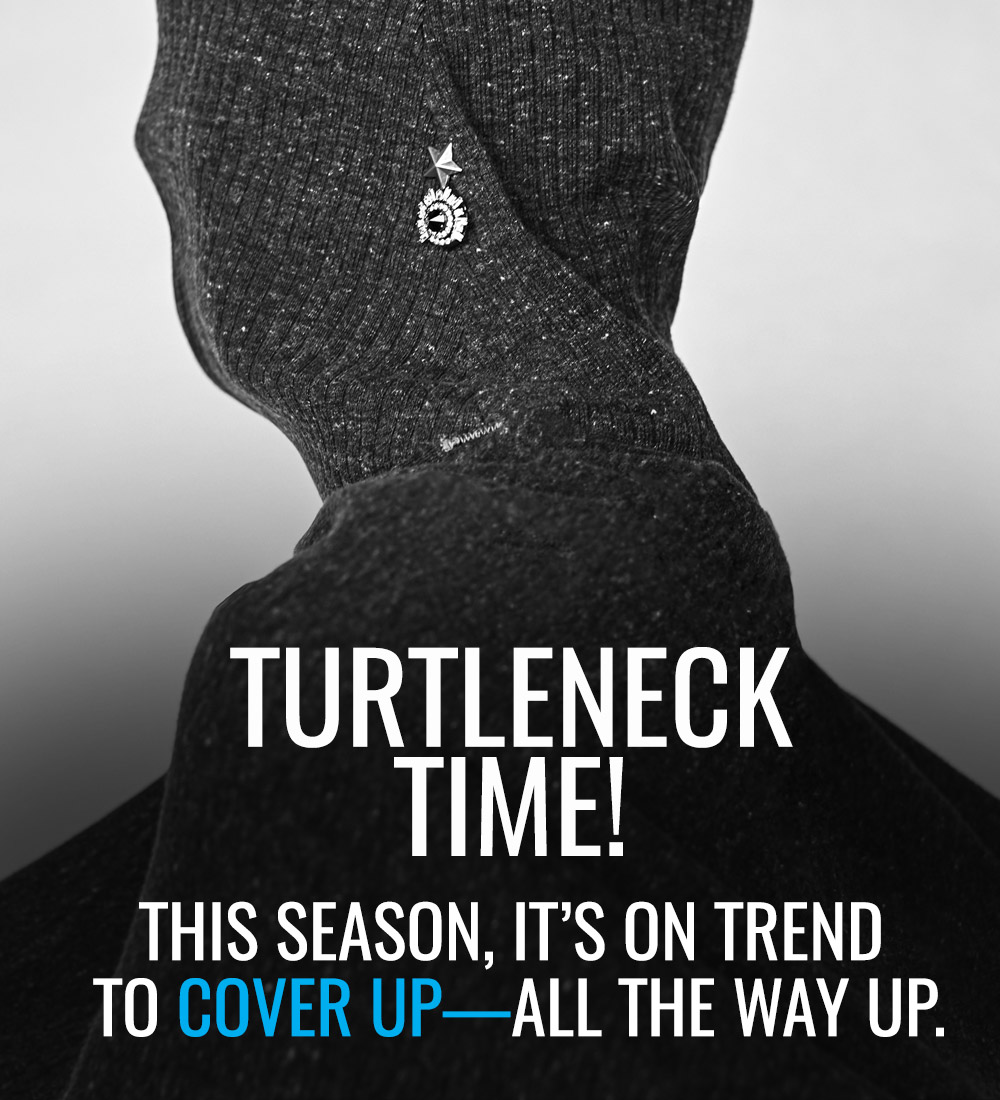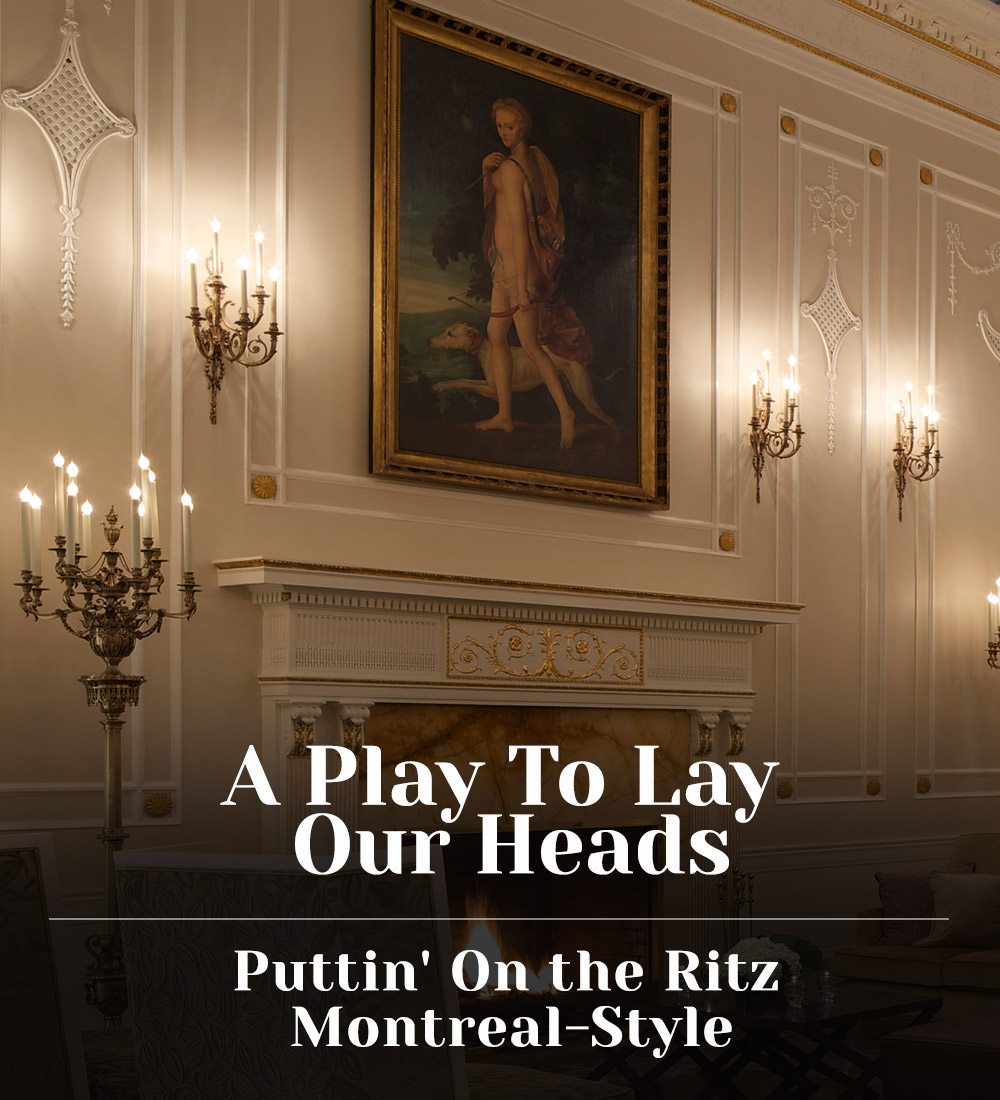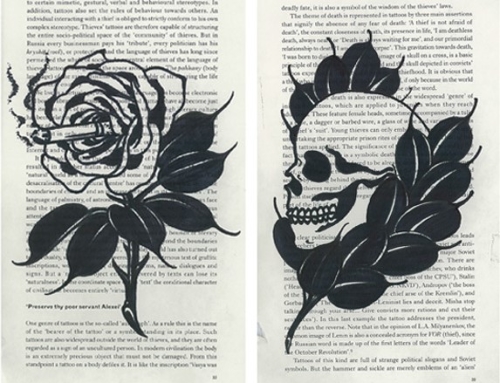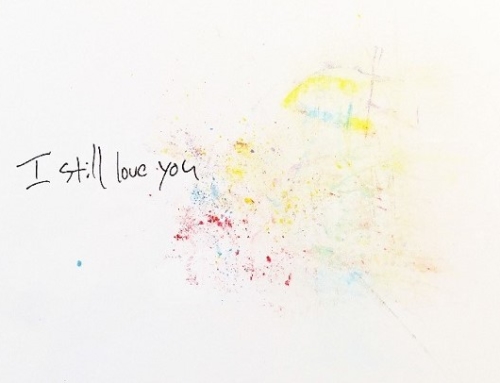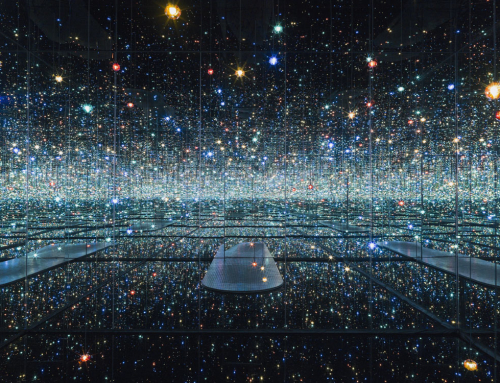Paris was ebullient this past October amidst a panoply of art fairs, gallery openings, and other art “happenings,” all circling around one major event: the Foire Internationale d’Art Contemporain (FIAC). The crown jewel of its nation’s arts calendar, the FIAC is the leading annual art fair in France, akin to the Frieze in London or The Armory Show in NYC. Celebrating its 37th anniversary this year, the 2010 edition was marked by an overwhelming presence of international galleries (only 40% were French, with a strong lineup of German and American galleries). In parallel, Paris has witnessed a proliferation of satellite fairs in recent years, to include the Show Off, Slick, Chic Art Fair, Cutlog, and Access & Paradox (3 of which were established this year alone), attesting to the dynamism of the capital after a sluggish 2009, and reaffirming Paris as a true mover and shaker in the modern and contemporary art markets.
Adding to this effervescence were a few major current events: Larry Gagosian, who has expanded his art empire to the capital, was awarded the Légion d’Honneur by the Culture Minister, Frédéric Mitterrand; One day before the FIAC opened to the press, the contemporary art museum Palais de Tokyo drew the curtain on a show beautifully curated by New York-based British artist Adam McEwen; and during the fair itself, the prestigious Prix Marcel Duchamp was awarded to emerging artist Cyprien Gaillard, (Bugada & Cargnel (Cosmic Galerie)), which secures him a solo show at the modern art museum Centre Pompidou next year.
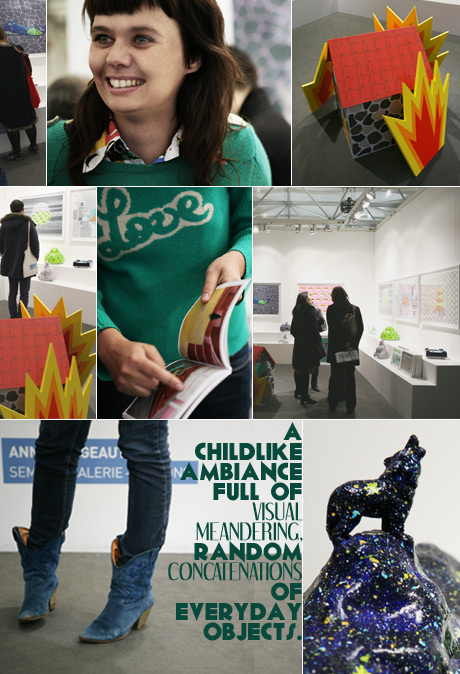
Photography by Molly S.J. Lowe
Participating galleries were divided between two major venues, the Grand Palais, with its magnificent glass roof and green steel architecture, and the royal cadre of the Cour Carrée at the Louvre Museum, with sculptural installations and an ephemeral cinema in the Louvre’s Tuileries Gardens. The Cour Carrée housed the younger, “emerging” artists and galleries, and it is here that we connected with Paris-based artist Anne Brégeaut during her solo show at the Semiose gallery stand.
Colour. Patterns and illustrations. Dreams. Fairy tales. A childlike ambiance full of visual meandering, random concatenations of everyday objects. These are the first things that shoot out at you when you walk by Brégeaut’s work on display. But a closer look paints a different picture. Brégeaut’s oeuvre has been described as being like a “bonbon poivré” (a peppered candy), and indeed when you plunge a little deeper into her bittersweet universe, you realize that you are confronting works operating rather on an existential, psychoanalytic, even traumatic level.
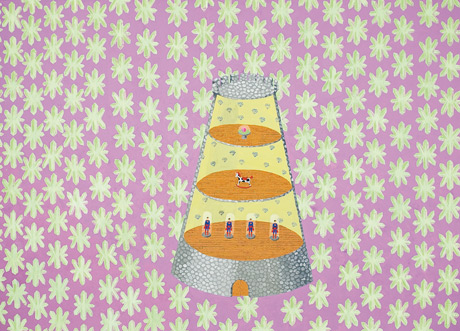
Art images courtesy of the Semiose Gallery
Take, for example, her painting entitled “Mon père, ce héros” (My father, this hero), which presents an overturned cone of French fries sprawled wantonly on a bed of coloured pansies. A biting and sordid portrait indeed, representing not only “her” father as a packet of greasy abandon, but the maternal, joyful, feminine floral background points to a vaster context of familial relations. On a lighter note, albeit thick with black humour, is the work “Bridget l’attendait avec impatience” (Bridget waited for him/it impatiently), showing an American-style two-story pink house floating amidst a jungle of giant carnivorous Venus flytraps, which seems to satirize that particular moment we open ourselves up to our dreams or desires, rendering us fragile and easy prey to disappointment, or to be taken advantage of.
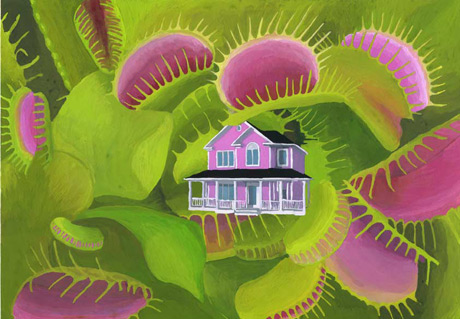
Of course there are many possible readings of these pieces, which is why discovering them is so enticing. Brégeaut is aware that her work inspires multiple narratives, and makes it a point not to tie those loose ends, suggesting, as she puts it, “there is always something furtive in the work.” Like a child chasing a rabbit, there is something we are running after but never get to hold.
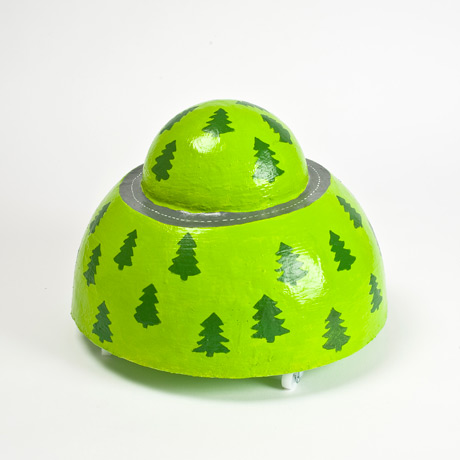
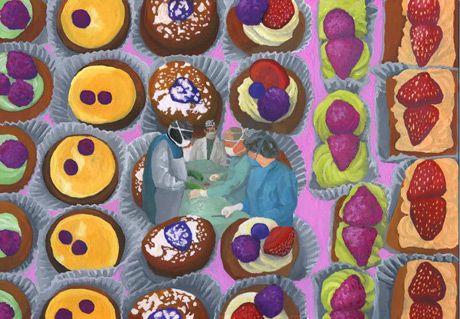
Brégeaut’s work seems to operate at times much like dreams do, taking fragments of daily events and turning them into symbols textured by the personal dilemmas at hand. She does not, however, turn to dreams for inspiration, though she does say that the notion of memory is central. And indeed we see this leitmotiv litter her work on show. For example, in the painting “Où s’en vont nos souvenirs?” (Where do our memories go?), we discern 5 random elements hovering over a patch of green pumpkins and purple flowers. Like a memory graveyard, the image seems to depict the elements of our daily life floating in limbo in our headspace, though one can’t help but attempt to try to piece them together, inventing the story they must have been extrapolated from.
First and foremost a painter, Brégeaut has recently turned to sculpture, translating her vivid visual universe into three dimensions. Her latest series, “Paysages oubliés” (Forgotten landscapes), aims to formalize the residue of our personal and emotional history. Taking shape as small, self-contained mini-worlds, these sculptures represent what Brégeaut describes as “the imaginary landscapes that we lug around with us … where we don’t remember anymore if our memories are real, if they even ever really existed.” By mounting them on wheels, she achieves a sense of transience. “They give them a feeling of floating, and to inspire the idea that you can take the landscapes around with you,” Brégeaut explains. “The notion of circulation is important.” As she goes on to say, memories are in a constant state of transition, of flux. Though an extension of her printed work, Brégeaut approaches this new medium with more spontaneity than she does her paintings. Her sculptures thus offer us a new angle through which to access her artistic vision, and enrich our experience of it.
Semiose, which represents Brégeaut, was one of the only galleries at the FIAC to opt for a solo show, and the impact was undeniable. Brégeaut’s work stood out like the Holy Grail, offering a haven for us spectators overwhelmed by a general atmosphere of heteroclite, random, and singular works, many indecipherable as stand-alones.
Founded by Benoît Porcher in 2006, Semiose acts as both a gallery and a publishing house. Though a young gallery, Semiose represents many older and established artists (and young, emerging ones as well, such as the famous duo Hippolyte + Hentgen!), which helped it win its spot at the FIAC back in 2009. Brégeaut warmly describes the ambiance between the trans-generational line-up of artists as being very close knit, even familial. Understandable, as all the artists are united by similar visual universes that at first glance “appear wise, but upon closer inspection they all display a disquieting strangeness,” according to Brégeaut. Uncanny may be the key word, but the unsettling is perhaps just what makes this work so attractive.
Anne Brégeaut’s work is on show till January 16th, 2011 at the Mac/Val Museum in the Val de Marne outskirts of Paris.
About the Author
Liz Bullen is an Artistic Director and painter. Originally from the East Coast, she currently lives and works in Paris. She has done design work for notable institutions such as the Louvre Museum, The Science and Industry Museum in Paris, and the Accor Foundation. She is also the president of the collective “Transit Système” (www.transit-systeme.com), dedicated to the production and diffusion of contemporary art.




